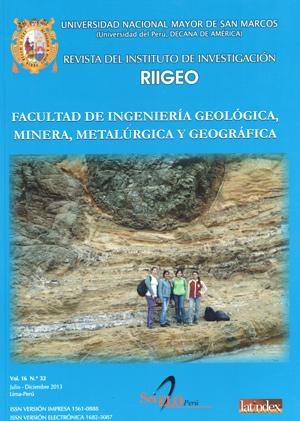Arches metallurgical study of clamp Brass and Model of prehispanic Inca settlement in the valley of Potrerillos
DOI:
https://doi.org/10.15381/iigeo.v16i32.11364Keywords:
Inca clamp, brass, excavation, pre-hispanic settlement, ornamentsAbstract
Potrerillos Valley distant 50 km from the city of Mendoza, was in ancient times with the presence of man, as evidenced by the scattered archaeological sites in the area. In a place called Blanco River no clear evidence importance due to a prolonged sequence of Indian occupation, primarily hunter-gatherers.
Surveys in stratigraphy over 50 cm yielded no material of human origin and sources of supply of raw materials, which were dated by radiocarbon method 14 which ensures that the terrace was occupied from 600 BC to 1500 A.D. and the findings in this area are very valuable for reconstructing the past ten centuries of the history of pre-hispanic settlement in that region. The newest discovery in the area is an Inca clamp which corroborates the influence of the Inca Empire from the Diamante River to northwest of Argentina. The Inca influence lasted about a hundred years. The study of dating agrees with the historical background since Mendoza was founded by Pedro del Castillo in 1561.
Downloads
Published
Issue
Section
License
Copyright (c) 2013 Silvana Carrizo, Omar Giunta

This work is licensed under a Creative Commons Attribution-NonCommercial-ShareAlike 4.0 International License.
AUTHORS RETAIN THEIR RIGHTS:
a. Authors retain their trade mark rights and patent, and also on any process or procedure described in the article.
b. Authors retain their right to share, copy, distribute, perform and publicly communicate their article (eg, to place their article in an institutional repository or publish it in a book), with an acknowledgment of its initial publication in the Rev. Inst. investig. Fac. minas metal cienc. geogr.
c. Authors retain theirs right to make a subsequent publication of their work, to use the article or any part thereof (eg a compilation of his papers, lecture notes, thesis, or a book), always indicating the source of publication (the originator of the work, journal, volume, number and date).






